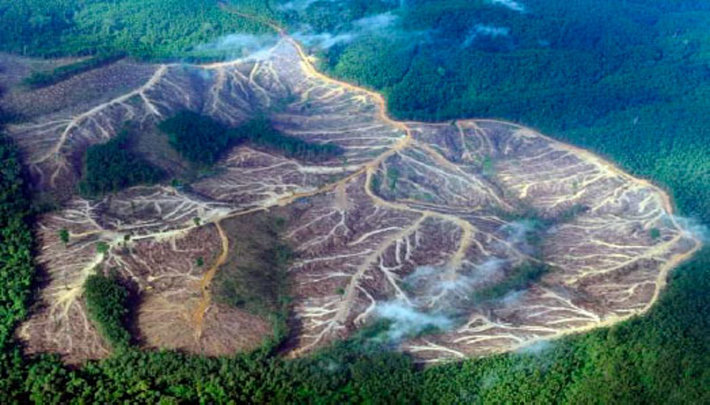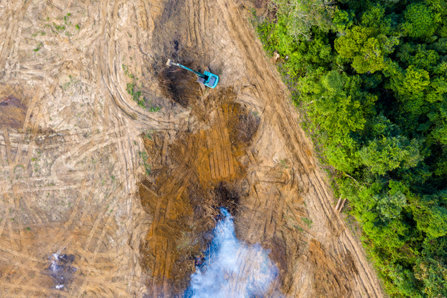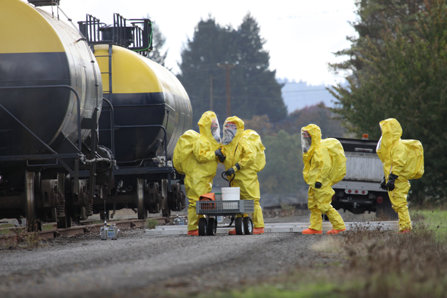What are the Environmental Effects of Drug Addiction?

(Image Courtesy of Purdom and Nokes 2014)
Drug abuse harms the ecosystem. This harm is a researched and documented fact – though perhaps little known and surprising.
There is increasing awareness in recent years on the deteriorating condition of our ecosystem and how it affects our quality of life. Thanks to the efforts of environmentalists, most people have been educated on the dangers of pollution, littering, deforestation, biofuel extraction and soil toxicity. But how well understood is the intrinsic connection between drug addiction and environmental damage?
Drug addiction does hurt the environment. In fact, one could write an entire book on all the ways that drug manufacturing, trafficking, dealing and drug use all lead to significant environmental harm.
Given that the condition of the environment is of immense importance to current and future generations, it is vital to bring awareness to the connection between the drug crisis and environmental destruction.
Drug Chemicals Are Getting Into Our Water Supply
“Opiates in the Puget Sound.” As alarming and seemingly incredulous as that statement is, multiple news organizations used those words or a version of them when a 2018 research project broke the news that there were measurable quantities of opiates in the Puget Sound waters of Seattle, Washington.
The Puget Sound Institute, a science and research group, chartered with the study of Puget Sound, reported their findings. According to managing editor Jeff Rice, “Scientists typically find many chemical compounds in Puget Sound waters, ranging from pharmaceuticals to illicit drugs such as cocaine, but this is the first time that opioids have been discovered in local shellfish. The contaminants in this case are thought to be passed into Puget Sound through discharge from wastewater treatment plants. Even filtered wastewater can potentially include traces of thousands of chemicals known as contaminants of emerging concern (CEC)s. Runoff from agriculture and stormwater are also common sources of CECs.”
The Puget Sound findings are not an anomaly. Across America, urban areas are beginning to find traces of mind-altering drugs in the local water supply. What does it mean for the ecosystem when opioids, cocaine, cannabis, and pharmaceutical chemicals find their way into the water supply?
Illicit Drug Production and Deforestation

Habitat destruction, primarily deforestation, is associated with illicit drug production. Deforestation is particularly harmful because not only does it harm the environment and habitat of that local forest ecosystem, but deforestation has the additional harm of eliminating critical carbon sinks, i.e., trees.
In many parts of the world, huge forests are clearcut to make way for cannabis crops for marijuana and coca crops for cocaine. According to researchers Burns-Edel and Tristan, “Coca plantations in the 20th century accounted for approximately 7 million hectares of deforestation in the Peruvian Amazon. Trends going into the 21st century reveal that this destruction is still rampant; from 2001-2013 over 290,000 hectares of forest were lost due to processes of cocaine manufacturing.”
This problem gets much, much worse. Not only are old-growth forests being cut (eliminating important carbon sinks), and not only is the biodiversity of those regions being devastated by such destruction, but the most common method used to clear such forests is “slash and burn.”
“The deforestation that occurs for coca and marijuana plantations is frequently correlated with ‘slash and burn’ agriculture, making the already destructive practices exponentially more problematic.”
Slash and burn involves the incineration of rainforests to clear land for drug production. The carbon that’s been sequestered in those trees for decades is suddenly released into the atmosphere when those forests are incinerated. Again, quoting Burns-Edel and Tristan, “The deforestation that occurs for coca and marijuana plantations is frequently correlated with ‘slash and burn’ agriculture, making the already destructive practices exponentially more problematic. When trees are felled during a forest clear-cut, not only are they unable to continue sequestering carbon, but the carbon that they have accumulated for decades is then also released into the atmosphere when the trees are incinerated. The production of illicit drugs, therefore, affects the ecosystem level, as plantation efforts further complicate the impacts of greenhouse gasses and climate change.”
Drug Use is Closely Linked to Increases in Carbon Emissions

It is almost impossible to fully comprehend the broad scope of carbon emissions caused by drug production. From massive pharmaceutical factories (that create highly addictive opioid painkillers) to legal cannabis production, these activities have a carbon footprint, and it's a big one at that.
Looking at just one issue, indoor cannabis production, the carbon emissions released by this endeavor alone are daunting. We refer back to Burns-Edel and Tristan – “The average production of 1 kilogram of consumable marijuana results in 4,600 kilograms of carbon dioxide emissions. In perspective, each cannabis ’joint’ produced at an indoor facility is the result of three pounds of carbon dioxide emissions. Within a single year, approximately 15 million metric tons of carbon dioxide are emitted in the United States as the result of indoor cannabis production, an equivalent to the annual emissions of 3 million cars.” Just this one drug manufacturing industry alone has a vast, harmful effect on the environment.
Fresh Water Depletion – How Drug Manufacturing Uses Up Valuable Fresh Water
Opiates, arguably one of the most addictive drugs globally, require the mass cultivation of poppy plants for production. The current agricultural production of poppies is carried out with little concern for the protection of the environment. Quoting The Environmental Magazine, “Whether for legal or illegal drug production, the environments where poppies thrive best are inherently more sensitive from an ecological standpoint. Opium plantations are especially common in limestone-heavy, mountainous regions in Laos, Afghanistan, Myanmar, and other countries. The greatest threat opium processing poses is illegal logging and widespread deforestation to clear the land required for the crops. And wherever a critical mass of forest gets removed, the surrounding areas become more susceptible to drought, erosion, landslides, and flooding. In other words, the land becomes uninhabitable to humans and a wide variety of animals too.”
Water usage, depletion and drought are not just an issue with the cultivation of drug-producing plants. Pharmaceutical manufacturers also use a great deal of water to produce synthetic drug compounds (including addictive painkillers). While numbers aren’t entirely clear, one organization suggested that pharmaceutical manufacturing sites are a leading consumer of freshwater. That organization cautioned pharma companies to get better at water conservation, given the current and upcoming water shortages across the planet.
Bear in mind that while pharmaceutical companies do make medical drugs that greatly benefit human life, these companies also make addictive, mind-altering, potentially deadly drugs. Though this involves a whole other discussion on how drugs reduce quality of life, consider the fact that the pharmaceutical industry is largely responsible for the opioid epidemic the American people have been mired in since the turn of the century.
Chemical Waste – The Sinister Byproducts of Drug Manufacturing

While virtually all forms of drug production involve chemical waste, methamphetamine may produce the most by volume. Meth labs found and condemned within the U.S. must be labeled as biohazard zones, and they contaminate the area where they are located for years to come. Not only is cleaning up a meth lab quite costly (as high as $50,000 for some labs) there’s no way to entirely eliminate the effects of that lab on the local environment. For each pound of meth produced, at least five pounds of toxic waste are left behind.
Meth labs leave behind toxic chemicals so potent that they are harmful to human health. According to one study, “Phosphine gas reached 2.9 parts per million (ppm), three times the occupational short-term exposure limit. Phosphine causes headache, pulmonary edema, and death. Hydrogen chloride fumes reached 155 ppm, more than three times the level considered by the National Institute for Occupational Safety and Health to be ’Immediately dangerous to life or health.’ Hydrogen chloride causes respiratory tract damage. Ammonia, which causes lung edema, also soared to three times the ’Immediately dangerous to life or health level.’” If meth labs pose a severe risk to human life, the effects of those labs on the fragile ecosystems where they are located are sure to be devastating.
A Healthy Environment Starts with a Drug-Free Community
As if Americans needed another reason to keep their family members, loved ones, friends, coworkers, and city members safe, sober and drug-free! But the fact is, if we’re going to live on a healthy planet that is well-suited to human life, we must help those who are addicted to drugs get into treatment programs. Effective treatment eliminates the demand for drugs. And when the demand dries up, there will be no need to manufacture such drugs and continue to harm the environment as a result.
Sources:
- https://gsj.global.ucsb.edu/sites/secure.lsit.ucsb.edu.gisp.d7_gs-2/files/sitefiles/Burns-Edel.pdf
- https://theecologist.org/2009/may/19/environmental-impact-drugs
- https://www.npr.org/sections/thetwo-way/2018/05/25/614593382/traces-of-opioids-found-in-seattle-area-mussels
- https://www.pugetsoundinstitute.org/2018/05/bay-mussels-in-puget-sound-show-traces-of-oxycodone/
- https://emagazine.com/environmental-impact-of-drugs/
- https://www.pharmtech.com/view/considering-water-use-pharma-manufacturing
- https://www.ncbi.nlm.nih.gov/pmc/articles/PMC1280434/


 ®
®